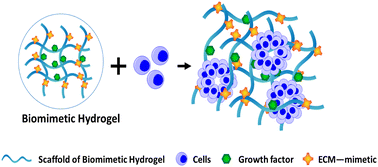Advances in biomimetic hydrogels for organoid culture
Abstract
An organoid is a 3-dimensional (3D) cell culture system that mimics the structural and functional characteristics of organs, and it has promising applications in regenerative medicine, precision drug screening and personalised therapy. However, current culture techniques of organoids usually use mouse tumour-derived scaffolds (Matrigel) or other animal-derived decellularised extracellular matrices as culture systems with poorly defined components and undefined chemical and physical properties, which limit the growth of organoids and the reproducibility of culture conditions. In contrast, some synthetic culture materials have emerged in recent years with well-defined compositions, and flexible adjustment and optimisation of physical and chemical properties, which can effectively support organoid growth and development and prolong survival time of organoid in vitro. In this review, we will introduce the challenge of animal-derived decellularised extracellular matrices in organoid culture, and summarise the categories of biomimetic hydrogels currently used for organoid culture, and then discuss the future opportunities and perspectives in the development of advanced hydrogels in organoids. We hope that this review can promote academic communication in the field of organoid research and provide some assistance in advancing the development of organoid cultivation technology.



 Please wait while we load your content...
Please wait while we load your content...